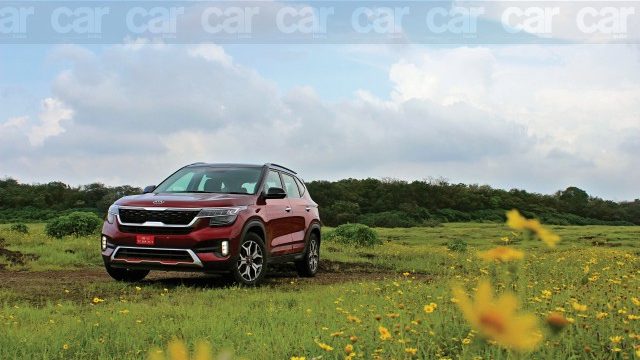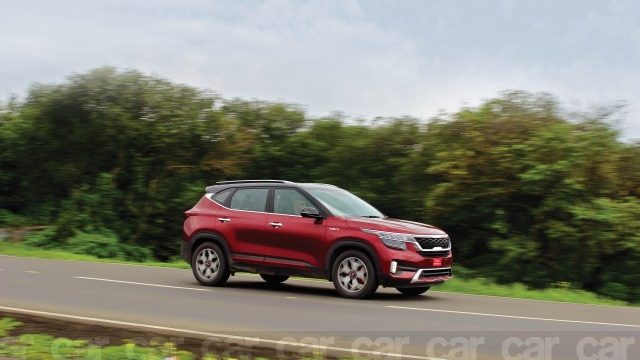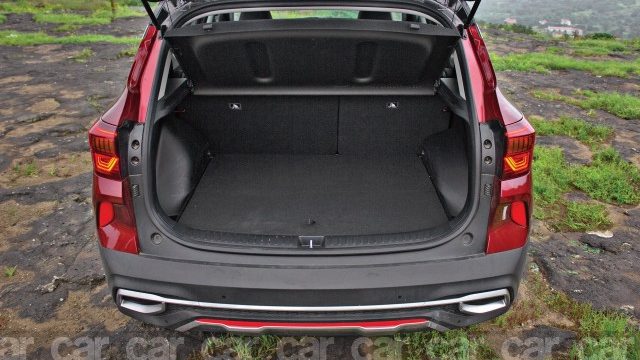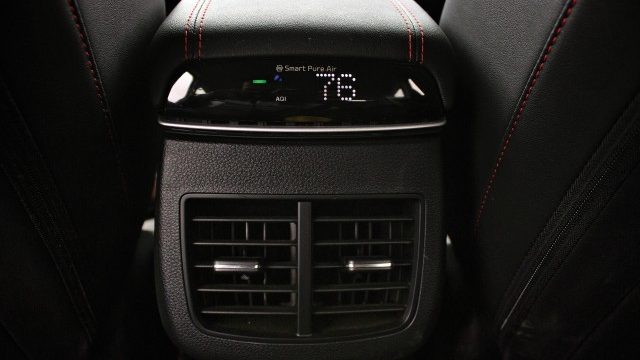The bold new Kia Seltos petrol automatic SUV is an impressive package that caters to all your city, highway, and the occasional off-roading needs.
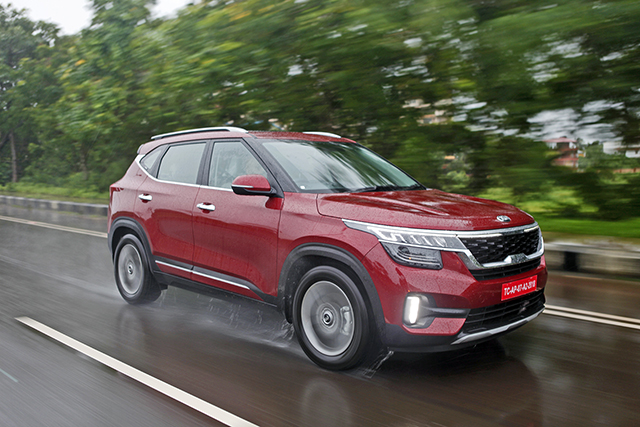
Engine and Performance
Among the numerous variants of the Seltos, the one that has generated the most curiosity is the 1.4-litre turbo-petrol with the seven-speed dual-clutch transmission, priced at Rs 17.29 lakh (ex-showroom). This BS6-compliant 1.4 unit is aimed squarely at those who live to drive with a heavy right foot. It makes 140 hp and 242 Nm and feels livelier than most other petrol engines available in the segment currently. It’s also one of the most refined motors out there — from the seamless fashion the turbo kicks into the effortless power delivery and the intelligent gearbox.
Performance comes right from the word go and continues to flow till the red-line. The automatic also gets a range of driving modes such as Eco, Normal, and Sport which alter the engine characteristics and the steering feel. We tested the car in all of them. The DCT also is the only variant of the Seltos to get traction modes, including Snow, Mud, and Sand, but I could hardly feel any difference on the wheels. Probably we need to do some more severe testing to understand its ability. A let-down is that there aren’t any steering-mounted paddle-shifters, but you can have some fun shifting manually by using the gear lever. Yes, it allows you to shift down at higher revs which doubles the fun.
Test Results: 0-100 km/h and Quarter Mile
Interestingly, our results show that in the Sport mode the DCT holds on to each gear a wee bit longer than necessary, which makes the drive more engaging, but it isn’t the fastest way to hit the ton. But taking control of the gears and shifting up a tad before the shift indicator came on helped us get the quickest 0-100 km/h run of an impressive 9.13 seconds. That’s a whole four seconds quicker than the current Creta with a bigger 1.6-litre engine with a six-speed auto ’box. It crossed the quarter-mile doing 139.70 km/h in an equally impressive 16.72 seconds.
Fuel Economy and Drivability
The seven-speed dual-clutch transmission ensures that the engine remains in the lower revs as it sails smoothly in the city traffic. When probed, it briskly dials up the rpm without making it sound coarse or gruff. The well-spread ratios keep the motor in the meaty powerband so efficiently that you hardly realise that it doesn’t come with steering-mounted paddle-shifters. This gives the Seltos great driveability and endorses the good roll-on timing. This means that you can step on the gas and reach from 40 km/h to 80 km/h in just four seconds. Along with the solid performance what’s even more impressive is that the seven-speed DCT claims to be slightly more efficient than the manual version, returning 16.5 km/l.

Design and Style
The 1.4 turbo-petrol is available in the sportier GT Line, so it gets crystal-cut alloy wheels, red highlights on the body and red front brake calipers. It’s based on a new platform which will also underpin the next-gen Creta and, hence, the Seltos is slightly longer and wider than the current Creta, but the roof of the Kia is kept marginally lower. These give it a nice, wide, and butch road presence despite it not being as large as the MG Hector or the Tata Harrier. SUV-lovers will appreciate the strong body-lines and upright pillars which give the car a sharp, squarish profile. That apart, the distinct Tiger-nose inspired grille and the crown-jewel-type LED headlamps help to create a striking front design.
(Also Read: 2020 Hyundai Creta Diesel BS6 Review)
The neat side profile consists of confident lines while the 17-inch wheels nicely fill the arches. The sharply rising glass-line from the C-pillars in this dual-tone roof option looks impressive. The roof-rails, scuff plate, and side cladding complete the bold SUV stance. Even from behind you’ll immediately recognize the Seltos as it looks distinctive with interesting LED tail-lights layout, chrome strip on the boot lid, faux dual exhaust, and skid-plate on the rear bumper. The Seltos is a well-executed design and finding flaws is rather difficult.
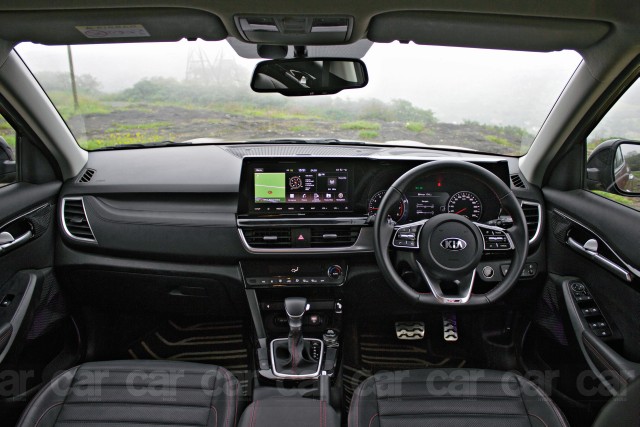
Interior and Cabin
The cabin quality can be compared to cars from higher segments as the design and interesting mix of textures and materials have been executed brilliantly. The large doors and high seat position make getting in and out very convenient — a point worth considering if you travel with elderly people. The clear view from the height-adjustable driver’s seat is another positive. The GT Line gets all-black interior, ridged leatherette seats and contrasting red stitching. Gripping the flat-bottom, leather-wrapped steering further accentuates the confident driving position. From the soft-touch dashboard to the buttons and dials everything resonates a sense of richness. There’s plenty of storage space, including bottle-holders on the door-pockets, a couple of coffee-cup holders on the centre console, and a cubbyhole within the front arm-rest.
The rear seats are comfy, too, and you’ll be glad to see three individual head-rests, window blinds, and an adjustable back-rest that can be reclined by another six degrees. There’s ample head- and shoulder-room to fit three adults with ease but some people might be left wanting for more under-thigh support. The leg-room might be a tad less than bigger SUVs but the cabin is more spacious than the existing Creta. Carrying luggage isn’t a concern either, for the split seats can be folded to further increase the 433-litre boot space.
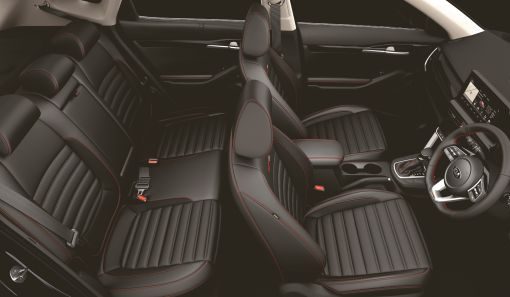
Infotainment System
There no shortage of features. You get a good-quality 10.25-inch touchscreen, conveniently positioned in your line of sight. The system is intuitive and easy to get around the various functions, plus it has the advantage of split-screen mode to access more than one feature simultaneously. Buttons on the steering wheel control the volume, phone, and cruise on the go. Plus you get the convenience of a pretty accurate voice command system. An informative 7.0-inch instrument console gives readouts like fuel range, tyre pressure monitor, and turn-by-turn navigation instructions. For quick info, you can depend on the retractable 8.0-inch head-up display which shows the speed and navigation guidance. There’s wireless charging for smartphones hidden away from the eye at the bottom of the centre console.

New Features
Kia did a splendid job of introducing the DCT in not just the mid GTX trim but have recently introduced the top-end GTX+ DCT version. Our mid-trim test car missed out on some features such as a powered driver’s seat and an eight-speaker Bose sound system when we tested the car a few months ago. But now Kia has introduced the 2020 Seltos with more features even in lower variants. These include a sunroof and a smart-key remote engine start feature. The Kia UVO service has been upgraded as well with new voice assist features as well as smart-watch connectivity. All of the automatic variants also get Full Automatic Temperature Control as standard.
Safety Features
The features list also includes auto headlamps, parking sensors, ambient lighting, rain-sensing wipers, and an on-demand rear-view camera. It’s reassuring that the GT Line also boasts of side and curtain airbags, electronic stability, and disc brakes on all four wheels, backed by brake assist. Another new safety feature in the 2020 Kia Seltos is an Emergency Stop Signal (ESS) which makes the hazard lights flash when the brakes are applied suddenly at high speeds giving a warning to other vehicles and reducing the chance of a collision.
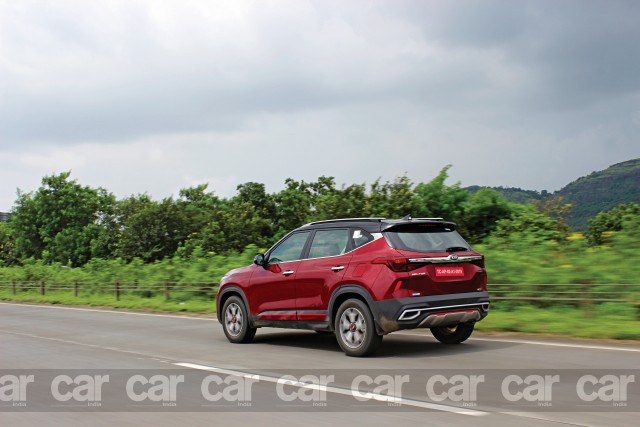
Brakes and Ride Quality
Talking of which, the brakes give a sense of confidence and manage to bring the car from 80 km/h to a standstill in 2.38 seconds, travelling just 26.54 metres. Even during hard braking, there’s no excessive wallowing or diving, which complements the well set-up suspension. It’s clearly firmer than the Creta’s, without the unwarranted stiffness that can make the ride unbearable. The advantage of the suspension being tuned well is that it remains nice and stable during turning into corners and soaks in the bumps and potholes from the road. It feels sportier and more composed than its softly set-up sibling, with very little body-roll. While the steering offers confident feedback and weighs well at higher speed, more importantly, the electronic assist makes it light and easy to turn.
Conclusion
Kia’s first product for India has everything that new car brands entering a market can dream of. The hard work, technology, and smart strategies have paid off. It might not have the robust feel of some other SUVs but, in turn, has the class and sophistication which the well-informed urban car-buyers need.



